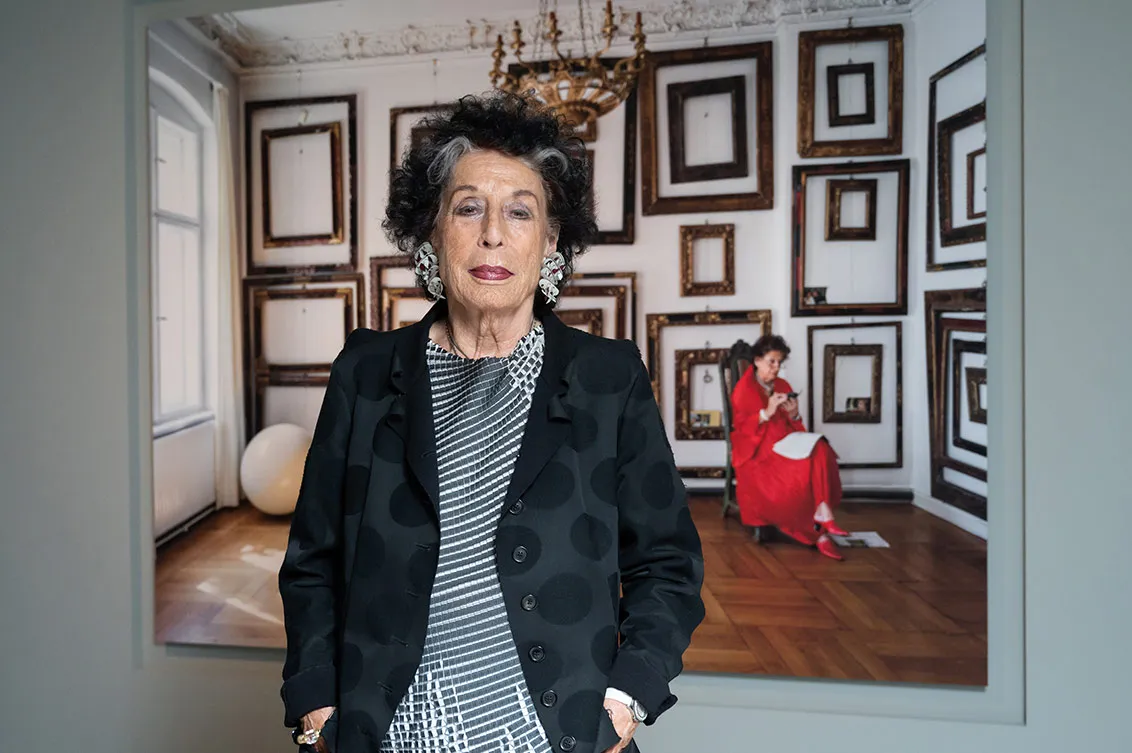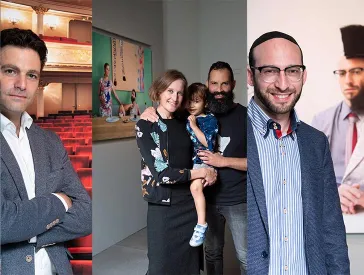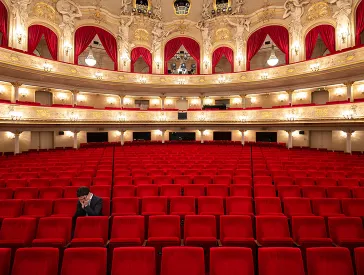Lea Rosh and Olaf Lemke
Interview and Photos from the Frédéric Brenner – ZERHEILT: HEALED TO PIECES Exhibition Opening

Lea Rosh in the exhibition ZERHEILT: HEALED TO PIECES; Jewish Museum Berlin, photo: Jule Roehr
We are Lea Rosh, television journalist, author, and chair of the Society to Support the Monument for the Murdered Jews of Europe; and Olaf Lemke, one of Europe’s five biggest frame dealers, both born in Berlin.
Where did the idea for your portrait’s staging and setting come from?
Lea Rosh: Frédéric Brenner met with me about the photo. He asked where he could photograph me. I told him: “My office, the standard wall of books, is boring. Come to Olaf Lemke’s frame gallery. I’ve rented it as a second office.”
He came, saw it, and said right away: “That’s where we’ll take the photo.”
And so we did. And then he saw our apartment, which is above the gallery, and photographed our sitting room. That’s the photo with Olaf Lemke.
From the photographic essay ZERHEILT: HEALED TO PIECES by Frédéric Brenner; Jewish Museum Berlin, purchased with the support of the Friends of the Jewish Museum Berlin
Olaf Lemke in the exhibition ZERHEILT: HEALED TO PIECES; Jewish Museum Berlin, photo: Jule Roehr
Olaf Lemke: After the gallery, Frédéric Brenner came to see our apartment. He was so enthusiastic that he immediately photographed the living room (the second image in the exhibition).
What had excited Frederic so much was the painting above the sofa of a woman (St. Mary Magdalene) with beautiful clothing but no head. A friend had given me this destroyed painting as a gift. I could have thrown it out, it was in such terrible shape. But I couldn’t throw out a painting, not even a destroyed one. I recognized its quality despite the destruction. I had it restored for 20,000 € by one of the best restorators in town.
Two art historians, Roberto Contini of the Gemäldegalerie in Berlin and Francesco Solinas of the Louvre in Paris examined the painting and immediately attributed it to the most famous woman painter of the early 17th century, Artimisia Genteleschi (1597–1651). It went on to be exhibited in Milan as part of the major retrospective of Artimisia Genteleschi at the Palazzo Reale in 2011. Of course I still hold out hope that that cut-out head will resurface someday. Even as it is: a superlative work of art! So Frédéric Brenner had an incredibly sharp eye!
From the photographic essay ZERHEILT: HEALED TO PIECES by Frédéric Brenner; Jewish Museum Berlin, purchased with the support of the Friends of the Jewish Museum Berlin
Citation recommendation:
Jewish Museum Berlin (2021), Lea Rosh and Olaf Lemke. Interview and Photos from the Frédéric Brenner – ZERHEILT: HEALED TO PIECES Exhibition Opening.
URL: www.jmberlin.de/en/node/8421


